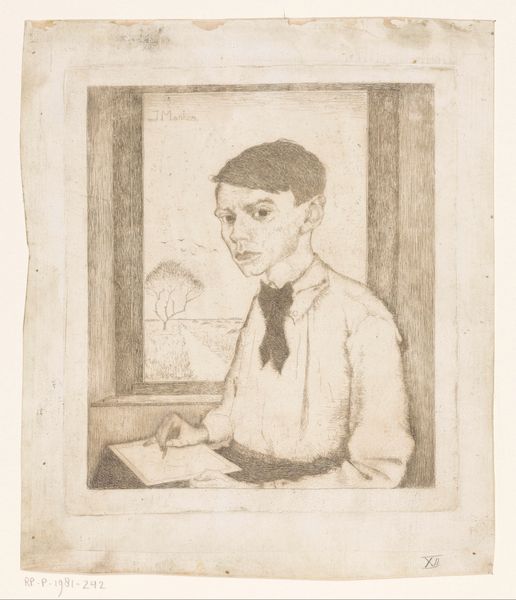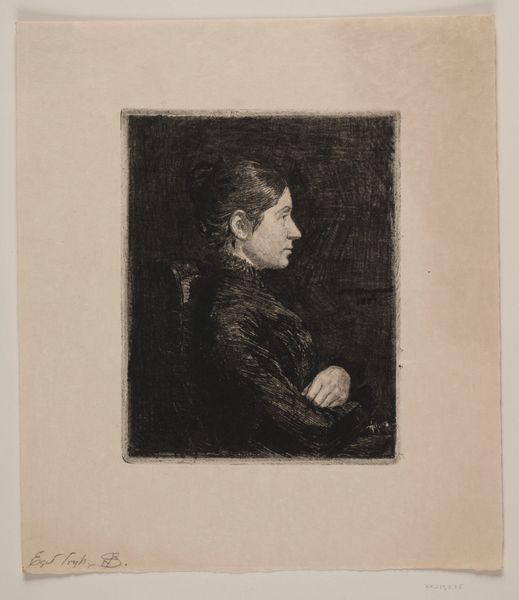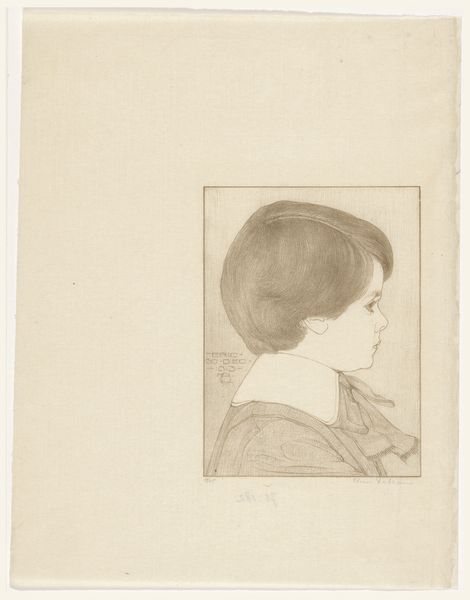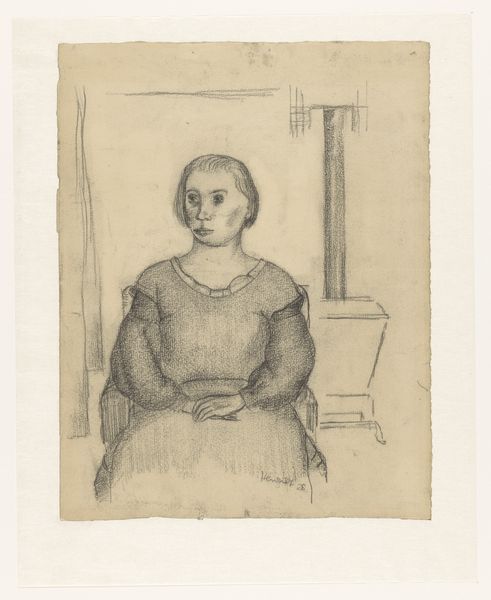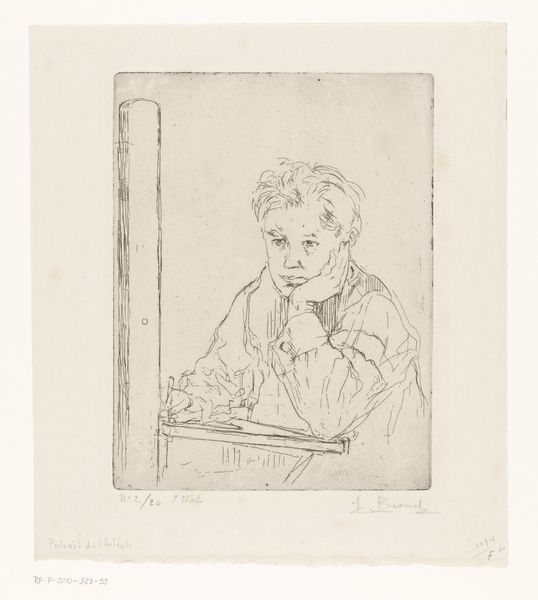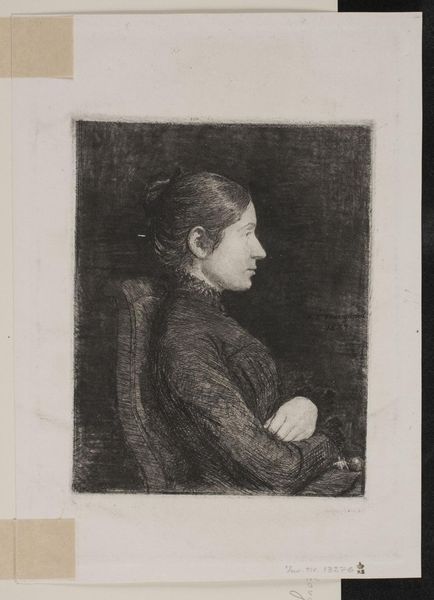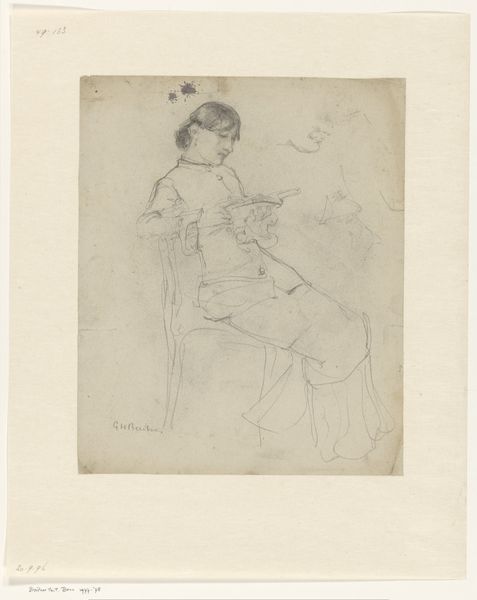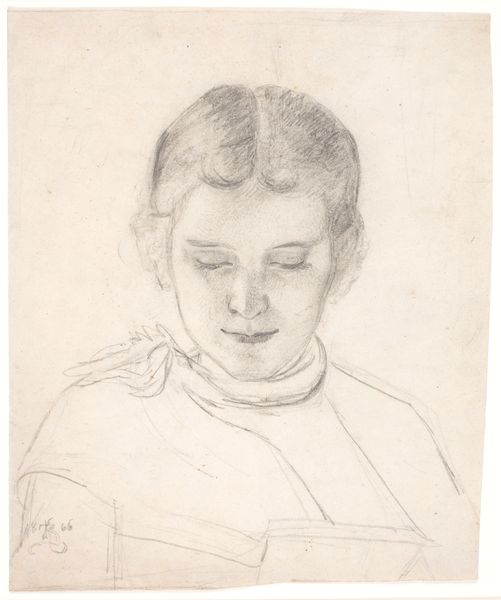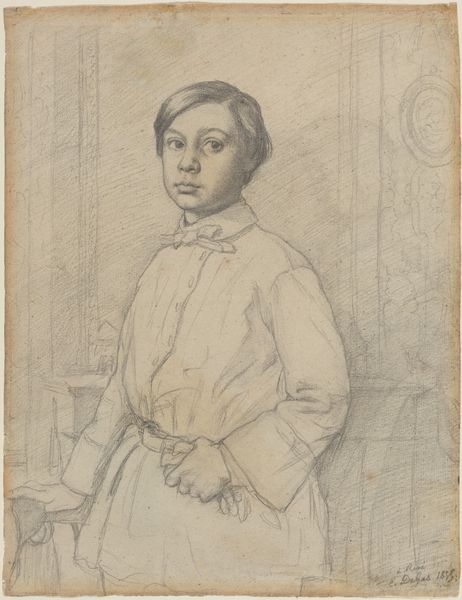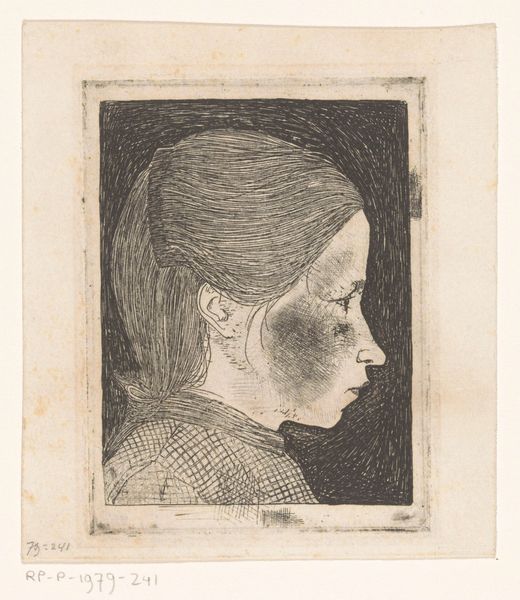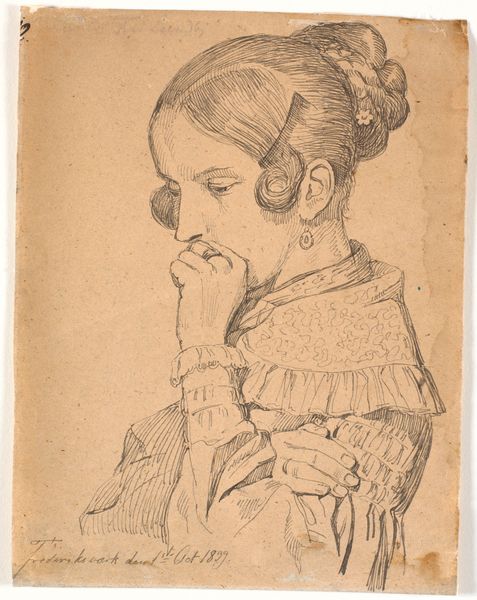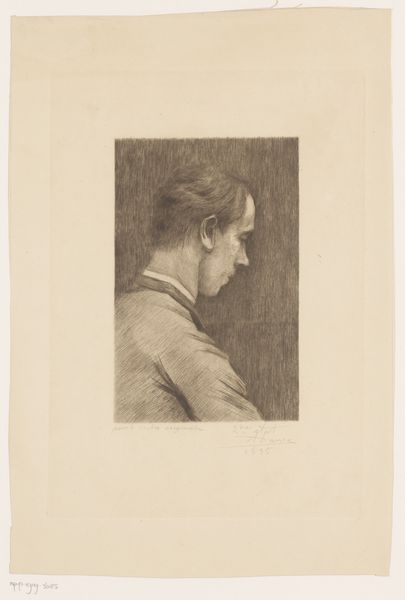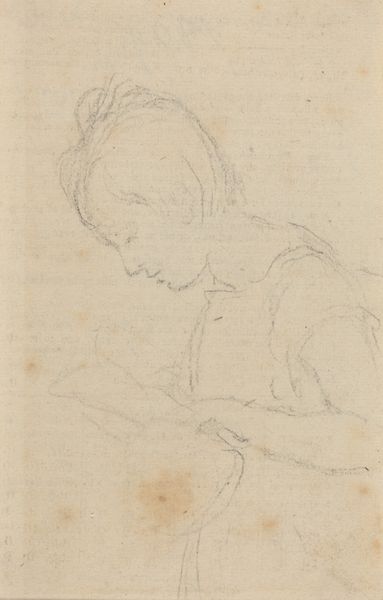
#
portrait
#
aged paper
#
toned paper
#
light pencil work
#
pencil sketch
#
old engraving style
#
personal sketchbook
#
pen-ink sketch
#
sketchbook drawing
#
pencil work
#
watercolour illustration
Dimensions: height 197 mm, width 168 mm
Copyright: Rijks Museum: Open Domain
Editor: Here we have Jan Mankes's "Self-Portrait," created in 1913. The piece feels incredibly intimate, almost like a direct peek into the artist's personal sketchbook. It's a pencil sketch, seemingly on aged paper, giving it a delicate and somewhat vulnerable quality. What's your take on this portrait? Curator: I see this self-portrait as a commentary on the act of artistic production itself. Mankes is not just presenting an image of himself, but revealing his labor. Notice the tools depicted: the paper, the pencil in his hand. The materiality is key; the "aged paper," as you mentioned, speaks to the humble means, perhaps a comment on the accessibility of art-making, its inherent democratization through simple tools. How might his social context, being a Dutch artist working in the early 20th century, impacted his process? Editor: That's interesting. I hadn't considered the socioeconomic aspect. The sketch-like quality now seems less about intimacy and more about available resources, or even a deliberate choice to highlight the process over a polished final product. So you’re saying the materials themselves become a statement? Curator: Precisely. Consider the texture, the visible marks of the pencil. He's showing us, not just telling us. It’s art about art, but grounded in the physical act of creation, of labour. How might viewing this portrait through the lens of materiality change how we interpret the subject's gaze? Is it introspection, or something more calculated? Editor: Now that you point it out, the direct gaze feels like a challenge. Almost like he's daring us to question the value we place on finished art versus the sketch, the labor versus the end result. I used to see just a quiet self-portrait, but I understand that focusing on materiality highlights its political dimensions and offers a powerful critical lens to the context of its creation. Curator: And hopefully, it encourages us to re-evaluate how all art objects come into being, not through ethereal inspiration alone, but through concrete acts of labour and the deployment of materials, laden with meaning and historical context.
Comments
No comments
Be the first to comment and join the conversation on the ultimate creative platform.
